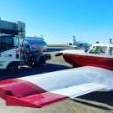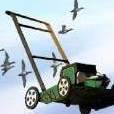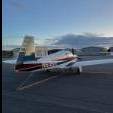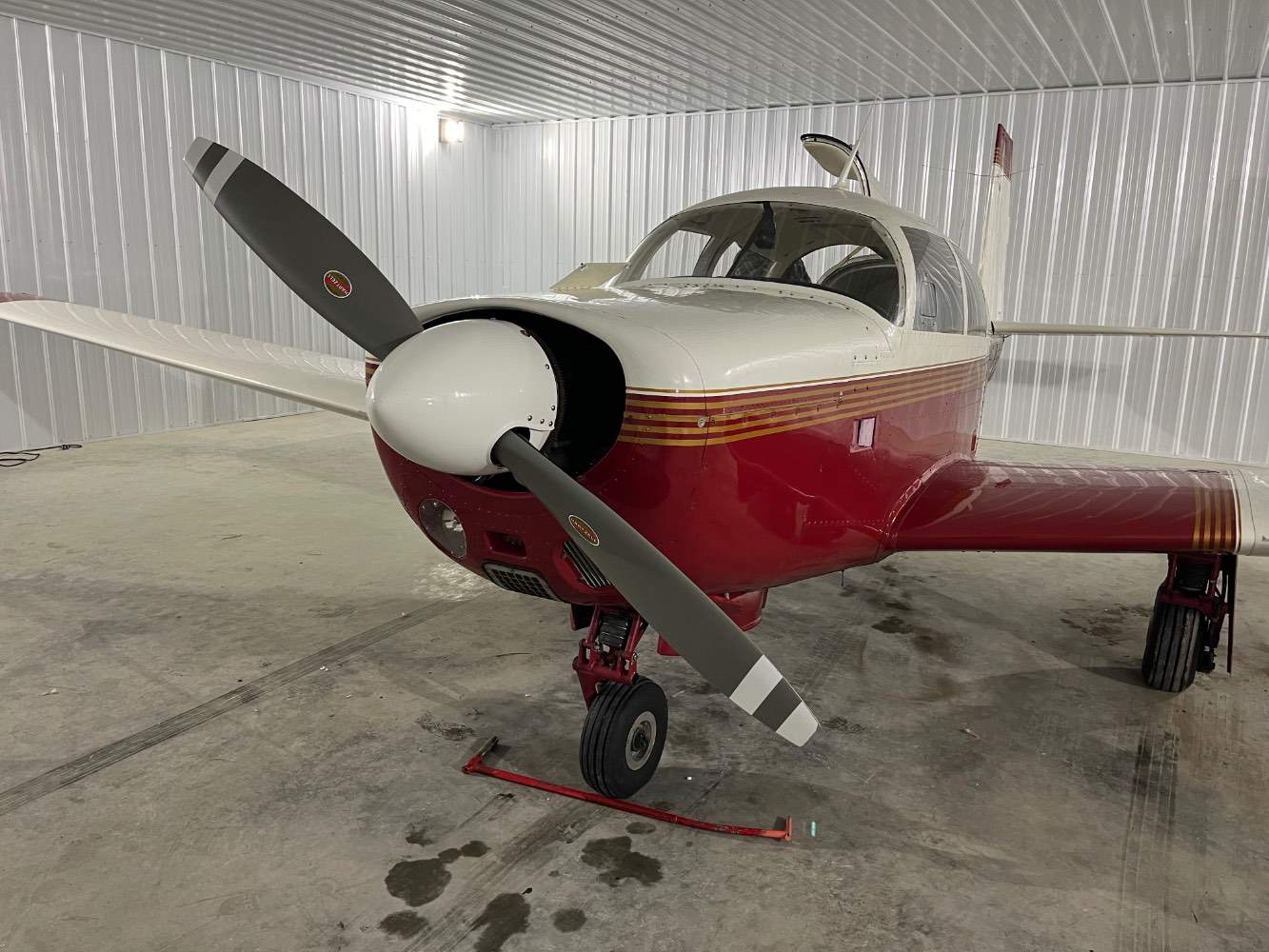-
Posts
82 -
Joined
-
Last visited
Profile Information
-
Location
Manitoba
-
Reg #
C-FXPZ
-
Model
M20E
-
Base
CYAV
Recent Profile Visitors
1,575 profile views
ArrowBerry's Achievements
-
I had made this post two years ago regarding our setup. I just renewed that same $15/month data plan and next time we are at the hangar we will be setting this up for winter number three.
-

Is the 1967 M20E model year different?
ArrowBerry replied to ArrowBerry's topic in Vintage Mooneys (pre-J models)
Based on serial number. This is the M20E section of the engine controls catalog. The first three lines are quadrant style cables for later models, the fourth line is '65 and '66, and the last line is '69 and '70. My serial number is 670024. Honestly the paperwork sign off isn't really a concern for the reasons stated, everyone knows McFarlane. I was more curious if there is something structurally or mechanically different for the '67 year that would make the cable physically different. Length, dimension, a clearance somewhere? -
Over the last four years of owning our 1967 M20E I've noticed that the '67 model year is not as well supported in parts at some vendors as the '64-'66, and '69+ model years. From what I have read, the M20E wasn't available in '68. For example, when looking at control cables for throttle, mixture, and prop at McFarlane they have nothing in their catalog for the '67 model year. They have up to '66, skip '67 and '68, and continue with '69 and onward. It made me wonder, is there something different about the '67 year that would make them exclude it? When I look at part numbers for a throttle cable it's the same number for '65 and 66' E models, and '66, '67, and '68 F models. Considering the the E and the F are basically the same firewall forward, why would the '67 E not have the same cable? Or does it, and its just not listed in their catalog? I understand that McFarlane can also make custom cables based on an owner produced original but they are not FAA-PMA certified... so what kind of paperwork is required to install this in a certified plane?
-
We also run a Cessna Ag Truck in our business with the IO-550. The airplane sits from October to May generally and we use the Phillips 20W50 Anti Rust oil in it during that time. We change the oil and filter at the end of the season and fly for about one hour to warm the oil to operating temperature and burn off moisture, then park it. I have read that when using this oil it's important not to turn the prop after you park it because the oil has coated the interior of the engine and you don't want to disturb it. If you are unable to fly, maybe a solution is to change the oil and do a really good run up before parking? https://www.aircraftspruce.ca/catalog/eppages/phillips20w50.php?clickkey=3032011
-
I recently priced out a two and three blade propeller new from Hartzell for our E model. The two came in at $15,291 and the three at $18,891. I think it's outrageous honestly, and we decided to keep our old prop. Mind you, ours is a non recurring AD "B" hub, so at least we have that going for us. It hardly seems worth it to shell out that kind of money for marginally better performance
-
We have used Marsh for our M20E with success since we bought the plane in 2020. They have consistently been the cheapest. We also use them for our Cub on floats and gotten the best rate after shopping around, plus their deductible was also one of the lowest.
-
We bought a plane and flew it back from the Deer Lake area to Winnipeg in May this year. We thought the fuel was insane on the island as well, but I guess you don't have a lot of options! Recently in the US we were getting about $4.90 per gallon at the lowest, that was in KS and SD. In Winnipeg the smaller airports are about $2.10 per litre, up to closer to $2.75 at St Andrews and Winnipeg.
-
We had a battery die on us after the plane sat idle for too long and drained it entirely. Would not take a charge. We bought a replacement battery from Spruce and it didn't work right out of the box. The "no bat" annunciation came on right away, and it persisted even to move the battery into our second G5. Garmin itself recommends maintaining at least a 30% charge in the battery, and yet the manufacture date of the new one we received was nearly two years prior. I suspect it had been sitting on the shelf for two long. Anyways, we did the warranty claim through Spruce and it took forever... like 3-4 months, but they did send us a new battery that finally worked. Does anyone know if Garmin is still honouring the warranty for the G5 serial numbers affecting by the battery draining service bulletin? I was a little bit out of the loop on that until we had this battery issue and now I'm wondering if we can still send in the unit to be fixed/replaced... whatever they do with them?
-

M20E Prop Upgrade Options
ArrowBerry replied to ArrowBerry's topic in Vintage Mooneys (pre-J models)
Yeah I'd be really happy to hear your opinion once it gets installed. Our planes would likely have the same performance gains or observations. It sure looks good. -

M20E Prop Upgrade Options
ArrowBerry replied to ArrowBerry's topic in Vintage Mooneys (pre-J models)
I was just curious if it made sense money wise because say in theory our prop is worth $7k with hub and blades, and the cost of the overhaul is $5k, you're already $12k into the new prop... so if you bought the Hartzell for $15k, and spent another $2k on shipping and installation labor costs--you would have to come up with another $5k... Roughly... I'm guessing on those numbers. But you get the idea. I don't know. That's also a lot of flying gas. -

M20E Prop Upgrade Options
ArrowBerry replied to ArrowBerry's topic in Vintage Mooneys (pre-J models)
Does anyone have a rough idea what a "B hub" and blades would be worth on the used market in good condition? During a cursory search I couldn't find a single one for sale used to compare to. I did get a quote from Hartzell, however, on the new two blade scimitar of $15,300 and the three blade option at $18,900 Holy cow! -

M20E Prop Upgrade Options
ArrowBerry replied to ArrowBerry's topic in Vintage Mooneys (pre-J models)
Thanks for your response. I was just looking at your avatar picture and noticed you are from Wichita. My partner was at FlightSafety last week for a King Air recurrent and I brought the plane down for the weekend. Had lunch at Stearman field and did a day in Kansas City at the WW1 Museum. The Mooney is such a fantastic plane for travelling! -

M20E Prop Upgrade Options
ArrowBerry replied to ArrowBerry's topic in Vintage Mooneys (pre-J models)
Yes it does have a restriction for the E and F models, no continuous ops between 2350 and 2550 rpm above 24 inches MP. -
I've been educating myself on Mooney propellers this evening. Firstly, trying to wrap my head around which models and serial numbers are affected by the recurring 100 hour AD. We have the HC-C2YR-1BF from Hartzell with a hub serial number of CH39229B. I understand that we are not affected by the AD because the hub serial number ends with "B", which I've seen referred to on this forum as a "B hub" -- is this correct? Second question, next year our prop will be due for its mandatory 10 year overhaul. This is a Canadian requirement for all constant speed props regardless of hours of use, no way to avoid it. It makes me wonder what other props are available with an STC for a 67' M20E that would remove the RPM restriction from 2100-2350. I've been cautioned by an engine shop and a couple mechanics to stay far away from this "red range" as it really does trash the bearings and should be respected. We operate at 2450 in cruise for every flight to give us a buffer to account for potential tach errors etc, in an effort to stay far away from this red line! I want to do some math to see if its better spent money to sell our current prop as is, because in the US the overhaul requirement wouldn't apply, and put that money (and save the cost of the upcoming overhaul) towards a new prop. Our current prop was installed new in 2005, and last overhauled in 2015. I'd have check the book but its low time, less than 400 ish hours since new? And 90% of those hours since 2015. I've looked at the two blade Scimitar prop as a potential candidate but it also has an RPM restriction for the E, no continuous ops between 2350 and 2550 rpm above 24 inches? Is there anything to gain by switching props, aside from the general sexiness of the scimitar?
-
We replaced one in our 67E a couple years ago with the LAMAR, easy enough to get from Spruce and its worked good so far. Also replaced the same relay in a different plane and it failed after one year. Seems kind of ridiculous that you pay $180 for a "certified" relay that lasts one year while I can put one in my truck from Amazon for $20. Alas... paperwork.








